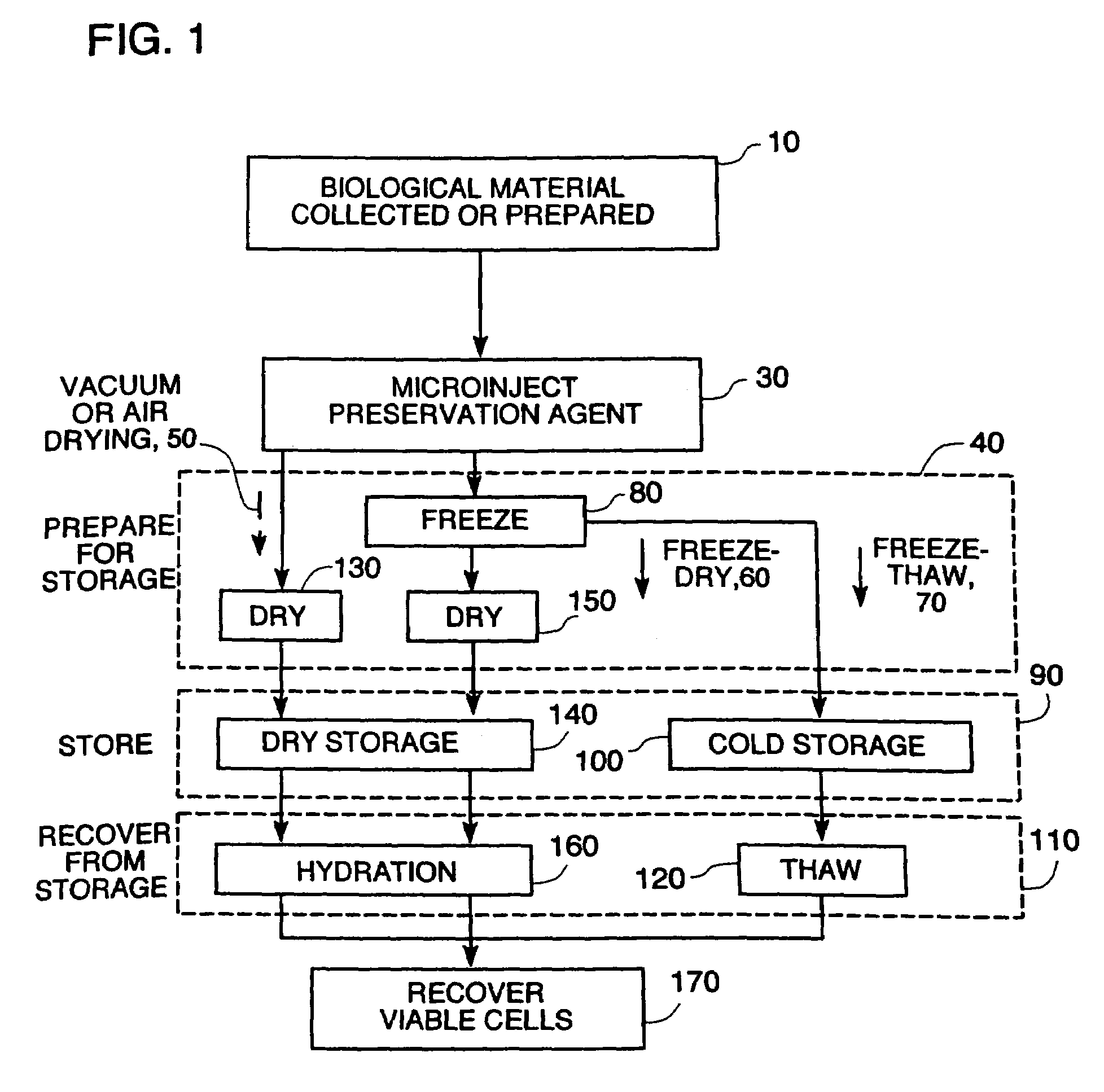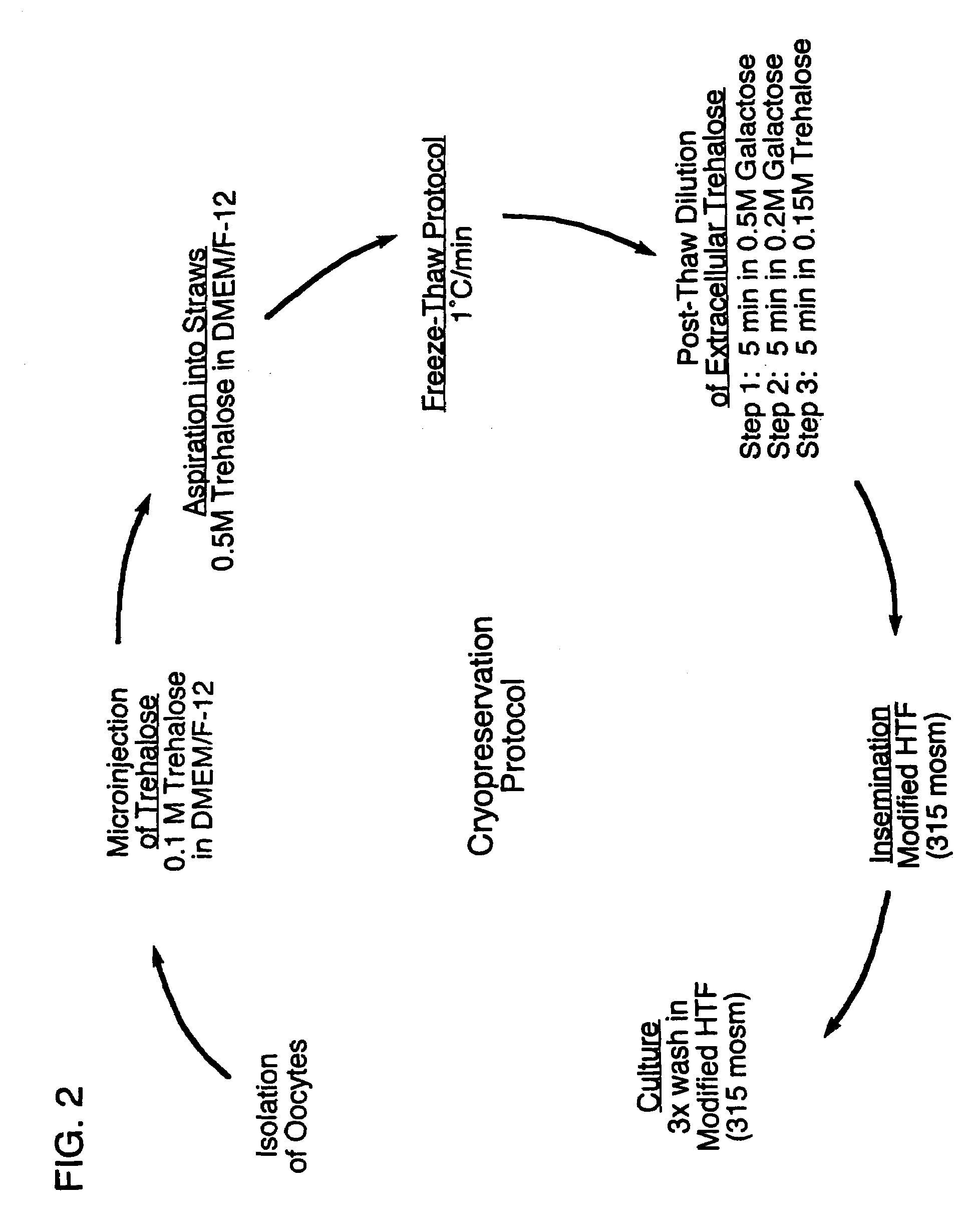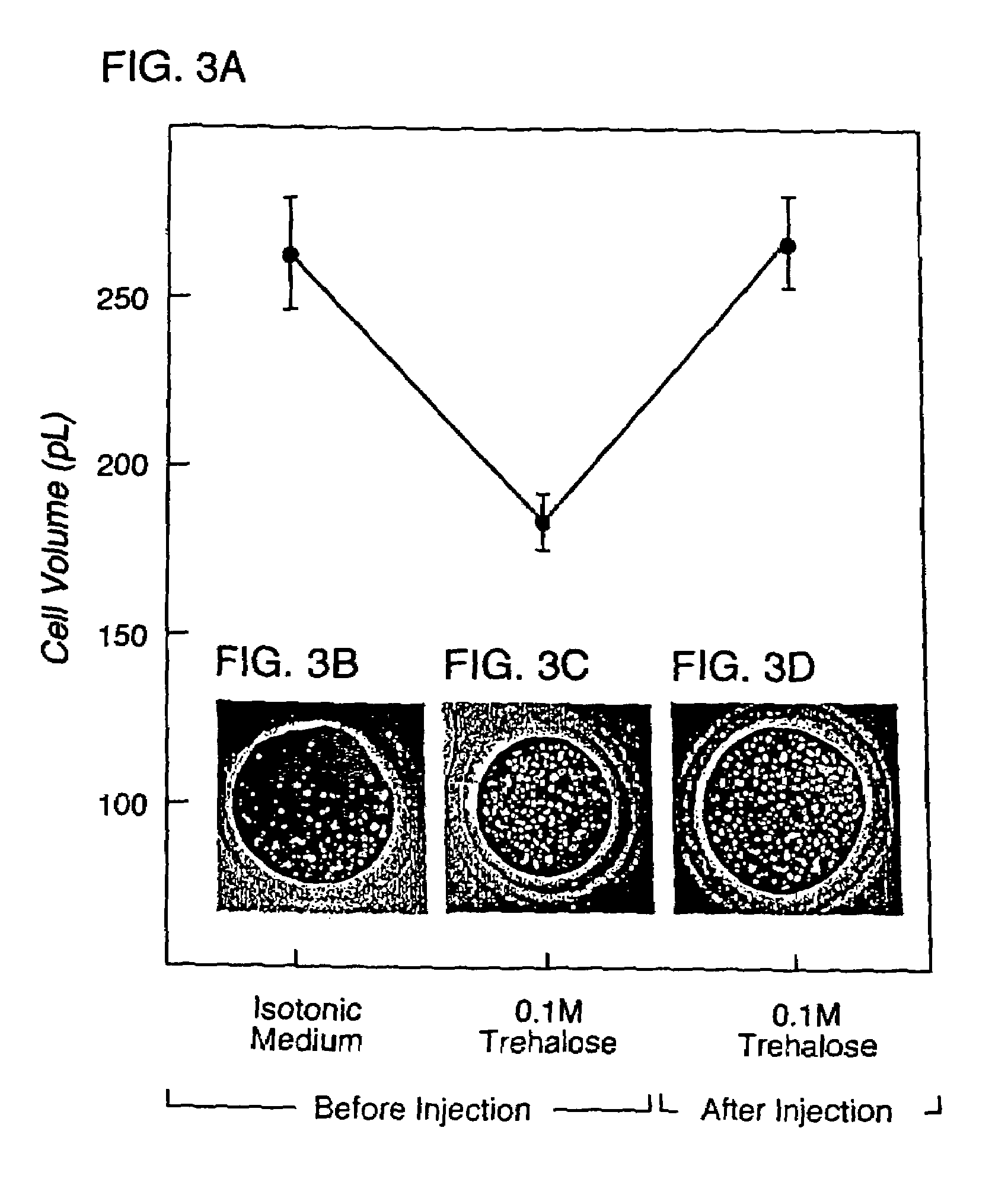Microinjection of cryoprotectants for preservation of cells
a cryoprotectant and cell technology, applied in the field of biological tissue preservation, can solve the problems of limited success reported in cryoprotection of human oocytes, damage to oocytes, toxic and osmotic effects of high cryoprotectant concentration on sensitive cells, etc., and achieve the effect of maintaining the viability of the cell
- Summary
- Abstract
- Description
- Claims
- Application Information
AI Technical Summary
Benefits of technology
Problems solved by technology
Method used
Image
Examples
Embodiment Construction
[0036]A method for preserving biological tissue of the invention, illustrated in FIG. 1 and FIG. 2, starts with the selection or isolation of the cells or tissue to be preserved (10). While the method of the invention may be used for preservation of any biological material having lipid membranes, it is most useful for preservation of living nucleated cells and, in particular, otherwise difficult to preserve mammalian cells such as oocytes.
[0037]Oocytes can be obtained by isolating oviducts and / or ovaries and releasing the oocytes. The oocytes are transferred to hyaluronidase, an enzyme that breaks down extra cells. The oocytes are then washed twice in HEPES-buffered Dulbecco's Modified Eagle Medium / Nutrient F-12 (DMEM / F-12) mixture (Gibco) and BSA (bovine serum albumin). Oocytes are then transferred to modified, isotonic HTF covered with embryo-tested mineral oil (Sigma), or any other suitable medium. The DMEM / F12 media is preferably supplemented with 4 mg / mL BSA. If desired, the oo...
PUM
| Property | Measurement | Unit |
|---|---|---|
| glass transition temperature | aaaaa | aaaaa |
| glass transition temperature | aaaaa | aaaaa |
| molecular weight | aaaaa | aaaaa |
Abstract
Description
Claims
Application Information
 Login to View More
Login to View More - R&D
- Intellectual Property
- Life Sciences
- Materials
- Tech Scout
- Unparalleled Data Quality
- Higher Quality Content
- 60% Fewer Hallucinations
Browse by: Latest US Patents, China's latest patents, Technical Efficacy Thesaurus, Application Domain, Technology Topic, Popular Technical Reports.
© 2025 PatSnap. All rights reserved.Legal|Privacy policy|Modern Slavery Act Transparency Statement|Sitemap|About US| Contact US: help@patsnap.com



